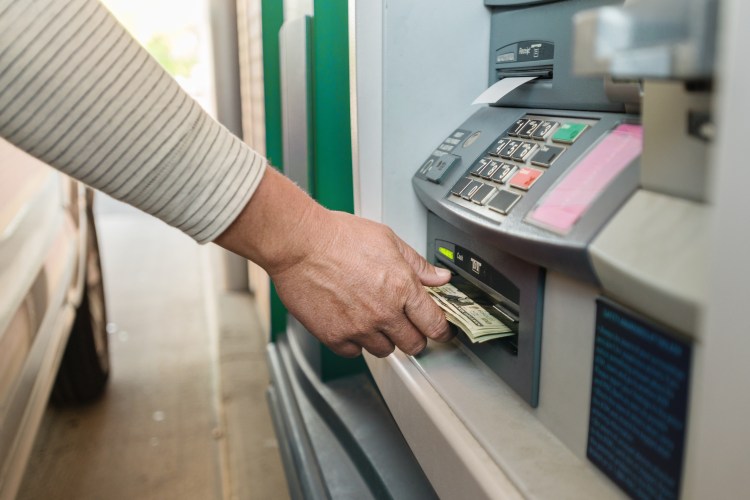The COVID-19 pandemic has sparked huge changes in retail banking behavior. In many cases, consumers are visiting (paywall) branches less or not at all, and using online and mobile banking services more and more. The open question is whether these changes will become permanent once the pandemic subsides. Either way, retail banks need to be prepared.
Retail banks are a cornerstone of COVID-19 recovery, processing a huge volume of PPP loan applications, offering forbearance and relief programs, providing emergency funds for communities, waiving fees, and more, to help maintain the economy. Since the long-term impact of the pandemic is far from certain, bank leaders may look to the practice of “scenario planning” to best prepare for an uncertain future.
Scenario planning is a structured process of anticipating and preparing for an unknown future. It can help organizations plan ahead for a wide range of plausible outcomes. Remember, back in April a group of renowned scenario planners from Deloitte and Salesforce hosted a virtual dialogue to narrow down four possible pandemic outcomes. Today, we share further refinements on those initial scenarios, geared specifically to the retail banking sector.
These scenarios explore how the industry may develop over the next one to three years in light of two “critical uncertainties:” the severity of the pandemic as it plays out, and the level of collaboration between countries. Other slightly less critical variants take into account the efficacy of the healthcare response, the level of social cohesion involved in that response, and the economic consequences of all of the above.
See details on all four possible scenarios within the U.S. retail banking landscape below:

Four COVID-19 banking scenarios
- The first scenario is referred to as “the passing storm.” Herein, global governments and health systems step it up to manage the pandemic effectively, although not without lasting repercussions. In this scenario, banks avoid serious structural damage due to strong government policy response, and economic activity recovers to positive growth within two years. Most mid-tier and community banks maintain their economic position, although lack of liquidity and capital negatively impacts challenger (upstart) banks and non-member financial institutions. Market consolidation accelerates above pre-crisis levels, and collaboration between countries leads to further convergence of banking regulations around open banking and data sharing, placing more control into the hands of customers.
- The next scenario, “good company,” is marked by a more prolonged pandemic in which governments struggle to handle the crisis independently, and collaborate with large corporations to control the pandemic. In this scenario, demand for fee-based banking services recovers slowly, and regulators relax regulations to support the flow of credit to communities. Regulators are supportive of challenger banks and other new entrants who lead with technology and have low-cost structures. These and other niche players benefit from the rising degree of trust in retail banks. This, in turn, ripples to increased access to data, which opens the door for further innovation that puts the customer’s needs and interests first.
- A third scenario is dubbed, “sunrise in the east,” where China and other Asian countries are more effective in managing the pandemic than the U.S., and take a global leadership role. In this scenario, the pandemic impact is severe, and collaborative health responses are led by East Asian countries, which emerge stronger. In the U.S., slow recovery and long-term near-zero interest rates result in muted balance sheets and shrinking profits, driving consolidation among small- and mid-sized banks. Banking policy shifts towards less protectionism and greater convergence as brighter economic conditions abroad lead to a decline in domestic capital investment. The biggest East Asian banks, especially payments companies, begin to penetrate U.S. markets while technology that matches customers with products based on price and fit gain in popularity. Established banks accelerate push for customers to self-serve through digital and call-center channels, driven by the worsening customer economics and new foreign entrants.
- The final scenario, “lone wolves,” is marked by a prolonged pandemic that evades eradication, is governed by isolationist policies, disrupts supply chains, has scattershot global coordination and is rife with weak policy. If this dark scenario unfolds, trust in the banking system erodes because of the prolonged crisis, limiting the effectiveness of government backstops. Loyalty dwindles as customers frequently switch banks in search of higher yields, some international banks exit the U.S. market due to high costs and strict regulations, while smaller banks struggle to remain competitive from a pricing and digital experience perspective, leading to significant market consolidation. The U.S. becomes a more cashless economy to reduce contagion through paper money as merchants invest in facial recognition and sensors to facilitate contactless payment and money transfers.
These four scenarios suggest a range of possible outcomes as the COVID-19 crisis (pardon the pun) mutates. It is too soon to tell which of these or other scenarios will emerge, but resilient leaders in retail banking should prepare now for what the future may hold.
Takeaways
- Be empathetic to customers, which will drive long-term differentiation. Banks should establish community investment funds, and determine a debt collection strategy that supports their customers and community, enabling them to maintain a solid financial position.
- Prioritize digital initiatives to accelerate banks’ ability to quickly deliver customer-first solutions and products.
- Be proactive in reaching out to customers, including small businesses, about new product options, how they are affected by policy changes, loan relief programs, and develop personalized plans to help those with delinquent accounts to catch up.
- Review credit product portfolios to identify customers at risk of default. Develop scorecards to identify those at risk and proactively educate and offer risk remediation strategies.
- Refine your branch strategy and establish flexible work options. Increase investment in new technology to help improve cross-sell as the potential long-term impact of selling via physical channels affects the bottom line.
In lighter news, the report lays out five “no regret” actions retail banks can take over the next nine months to better position them to recover, regardless of which scenario plays out.
Get products to support your return to the workplace at Work.com.




























